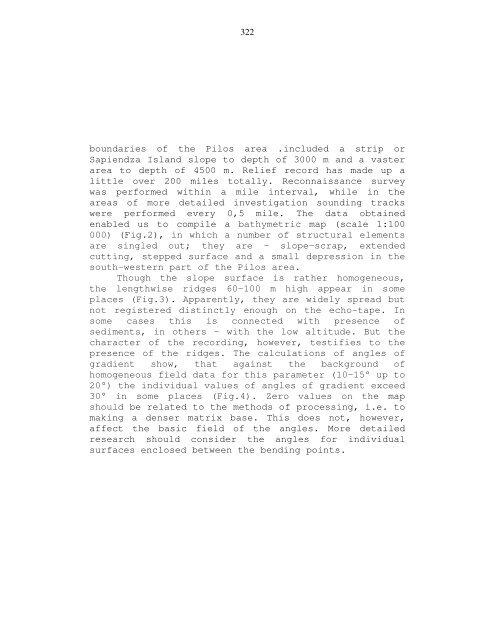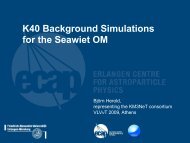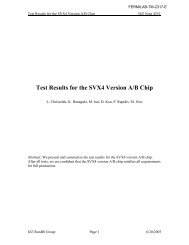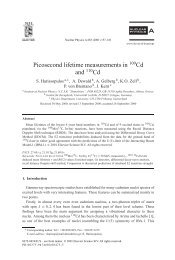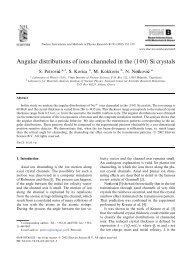Geomorphology and bottom sediments of the Pylos area
Geomorphology and bottom sediments of the Pylos area
Geomorphology and bottom sediments of the Pylos area
You also want an ePaper? Increase the reach of your titles
YUMPU automatically turns print PDFs into web optimized ePapers that Google loves.
322<br />
boundaries <strong>of</strong> <strong>the</strong> Pilos <strong>area</strong> .included a strip or<br />
Sapiendza Isl<strong>and</strong> slope to depth <strong>of</strong> 3000 m <strong>and</strong> a vaster<br />
<strong>area</strong> to depth <strong>of</strong> 4500 m. Relief record has made up a<br />
little over 200 miles totally. Reconnaissance survey<br />
was performed within a mile interval, while in <strong>the</strong><br />
<strong>area</strong>s <strong>of</strong> more detailed investigation sounding tracks<br />
were performed every 0,5 mile. The data obtained<br />
enabled us to compile a bathymetric map (scale 1:100<br />
000) (Fig.2), in which a number <strong>of</strong> structural elements<br />
are singled out; <strong>the</strong>y are - slope-scrap, extended<br />
cutting, stepped surface <strong>and</strong> a small depression in <strong>the</strong><br />
south-western part <strong>of</strong> <strong>the</strong> Pilos <strong>area</strong>.<br />
Though <strong>the</strong> slope surface is ra<strong>the</strong>r homogeneous,<br />
<strong>the</strong> lengthwise ridges 60-100 m high appear in some<br />
places (Fig.3). Apparently, <strong>the</strong>y are widely spread but<br />
not registered distinctly enough on <strong>the</strong> echo-tape. In<br />
some cases this is connected with presence <strong>of</strong><br />
<strong>sediments</strong>, in o<strong>the</strong>rs - with <strong>the</strong> low altitude. But <strong>the</strong><br />
character <strong>of</strong> <strong>the</strong> recording, however, testifies to <strong>the</strong><br />
presence <strong>of</strong> <strong>the</strong> ridges. The calculations <strong>of</strong> angles <strong>of</strong><br />
gradient show, that against <strong>the</strong> background <strong>of</strong><br />
homogeneous field data for this parameter (10-15° up to<br />
20°) <strong>the</strong> individual values <strong>of</strong> angles <strong>of</strong> gradient exceed<br />
30° in some places (Fig.4). Zero values on <strong>the</strong> map<br />
should be related to <strong>the</strong> methods <strong>of</strong> processing, i.e. to<br />
making a denser matrix base. This does not, however,<br />
affect <strong>the</strong> basic field <strong>of</strong> <strong>the</strong> angles. More detailed<br />
research should consider <strong>the</strong> angles for individual<br />
surfaces enclosed between <strong>the</strong> bending points.


